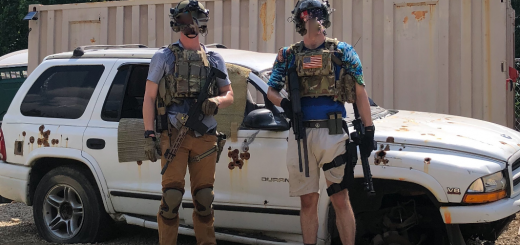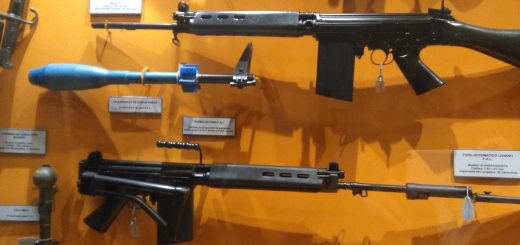A Practical Guide to Modern Shooting Sports: USPSA, IDPA, IPSC, & Beyond
Modern Shooting Sports: USPSA, IDPA, IPSC, PRS, and More
From tactical skill development to pure athletic marksmanship, modern shooting sports offer something for everyone. This guide breaks down the major disciplines in the United States and around the world, explaining where they came from and how they are practiced today.
The Rise of Practical Shooting
Modern action shooting traces its roots to California in the late 1950s to early 1960s. Shooters began seeking a more realistic way to measure pistol skill rather than relying only on traditional bullseye targets. The goal was simple: blend speed, accuracy, and movement in a way that resembled defensive gun use.
These early experiments eventually formed the foundation of the International Practical Shooting Confederation in nineteen seventy six. As IPSC expanded across the globe, the United States evolved its own rule sets and organizations geared toward civilian defensive carry, competition shooting, and tactical skill development.

USPSA
United States Practical Shooting Association
Fast movement, aggressive stage planning, and a modern gear focus define USPSA competition.
USPSA is the most popular practical shooting discipline in the United States. Competitors navigate dynamic stages that demand quick target transitions, movement, reloads, and accuracy under pressure. Scoring balances speed and precision, which rewards efficient stage planning and technical firearm handling.
Key Features:
- Dynamic movement and problem solving
- Scoring blends speed and accuracy
- Wide variety of divisions including Carry Optics, Open, Limited, Production, PCC, and more
- Heavy emphasis on performance on the clock
USPSA matches are a proving ground for competitive shooters, concealed carriers who want to sharpen performance, and firearms instructors who want measurable skill.

IPSC
International Practical Shooting Confederation
IPSC is the international standard and maintains standardized competitive rules worldwide.
IPSC shares roots with USPSA but operates as a global governing body. Rules are more standardized, equipment divisions are more strictly regulated, and stage design tends to be more structured. In many countries, IPSC is the only practical shooting option due to firearms laws or range restrictions.
In restrictive regions, competitors often train with airsoft or use club-controlled firearms. Even so, IPSC remains one of the most widely practiced dynamic shooting sports across Europe, Asia, and Latin America.
IDPA
International Defensive Pistol Association
IDPA stages are built around concealed carry and defensive skills rather than pure gaming.
Founded in nineteen ninety six, IDPA emphasizes concealed carry and defensive realism. Competitors must draw from concealment, use cover, and follow strict engagement rules. Gear tends to be closer to what a civilian might carry daily.
IDPA Highlights:
- Concealed draw requirement
- Cover usage rules
- Tactical reload rules
- Emphasis on defensive scenarios
While IDPA reduces gaming to preserve realism, high-level competitors still excel through excellent fundamentals and stage awareness.
Steel Challenge
Steel Challenge stages are short, fast, and focused on pure speed and accuracy.
Steel Challenge is one of the purest forms of speed shooting. Shooters fire at fixed steel plate arrays with no movement required. Stages are repeatable and consistent across the country, making it an ideal format for new shooters and younger participants. Rimfire divisions are especially popular due to low cost and minimal recoil.
Three Gun and Multigun
Three gun demands fast weapon transitions and solid handling across platforms.
Three gun matches combine pistol, rifle, and shotgun in the same stage. Targets can vary from close-range steel to distant rifle plates, and shotgun arrays often include steel knockdowns or flying clays.
The sport saw explosive growth in the two thousands and twenty tens, though match access varies today due to logistics, cost, and range requirements. Still, multigun competitions remain a favorite for shooters who want real-world firearm versatility.
Precision Rifle Series and NRL
Precision rifle competition blends tactical marksmanship with wind calling, ballistics, and improvised shooting positions.
Precision rifle competition has surged in popularity, especially with the growth of rimfire divisions that allow new shooters to train economically at shorter ranges. PRS and NRL matches require shooters to engage steel targets at varying distances under time pressure while building stable positions on barricades, rooftops, vehicles, and natural terrain.
SASS
Single Action Shooting Society (Cowboy Action Shooting)
Cowboy Action Shooting blends marksmanship, history, and theatrical immersion.
SASS events require period correct firearms like single-action revolvers, lever rifles, and coach shotguns. Shooters dress in western clothing and compete on themed stages. It is less about raw competition and more about tradition, style, and community.
The State of Shooting Sports Today
Shooting sports continue to grow in the United States, supported by a strong culture of civilian marksmanship, range development, and gear innovation. Competitive shooting drives firearm design, training methodology, and even holster and optics development.
Internationally, participation varies due to legal frameworks, but IPSC and precision rifle have seen strong global expansion. Even in countries with strict firearms laws, dedicated communities train with club arms, airguns, and airsoft to develop competitive skill.
From high-speed pistol matches to long-range steel engagements, competitive shooting has become one of the most diverse and accessible firearm hobbies in the world.
Final Thoughts
If you enjoy firearms, structured competition, and measurable skill improvement, shooting sports offer a path to grow, connect with a community, and test yourself under pressure. Whether you are a concealed carrier wanting realistic reps or a competitive marksman chasing hundredths of a second, there is a discipline that fits your goals.
The timer does not lie. Step up to the line and prove yourself.




